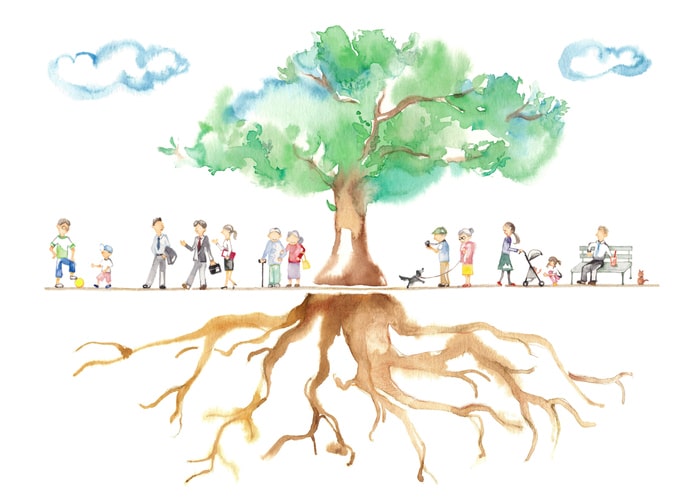-
07 February 2020
A reflection from Avi West, Master Teacher of Federation’s Jewish Leadership & Learning Department.

To develop a deep appreciation of Judaism, one must have a sensitivity to metaphor. All religions have their lists of “shalts and shalt nots,” but Judaism as a religious civilization has a broader album of rituals, stories, and images to convey attitude and recommend a way of life.
Tu B’Shevat, which literally translates as the 15th day of the Jewish month of Shevat, is referred to in the Mishna (the first major written collection of the Jewish oral traditions known as the “Oral Torah”) as the “new year for trees.” At face value, the holiday does not seem very relevant today. Tu B’Shevat was originally established for the purpose of calculating the age of trees for tithing (think divine income tax in ancient times). In Leviticus 19:23-25, it states that fruit from trees may not be eaten during the first three years. The fourth year’s fruit is a thanksgiving offering for God and the kohanim (priests). After that, you can eat the fruit. Each tree is considered to have aged one year at Tu B’Shevat.
But when moved into the realm of metaphor, this minor holiday takes on existential significance. On Tu B’Shevat, we rejoice in the fruit of the tree and the fruit of the vine. Some celebrate with a special seder, modeled on the Passover seder, while others plant trees and raise awareness about environmental issues. Tu B’Shevat marks the beginning of spring in Israel, where sustaining rains are at the peak of their power. For Jews outside Israel, Tu B’Shevat is a celebration of the renewal of vision and awareness, a commemoration that connects us to nature and Israel. This talent for reimagining holidays and rituals to keep them current and meaningful is not radical; it is a part of the Jewish religious and cultural DNA, and the secret to Jewish resilience, innovation, and continuity.
Let’s look at some of the metaphors that reinvigorate Tu B’Shevat.
- The wisdom of trees: Tu B’Shevat is a perfect reminder to appreciate trees as a natural resource and a source of spiritual inspiration. We should strive to be like a tree by:
-
- Being grounded
- Connecting with your roots
- Turning over a new leaf (the way we pledge to start over on both Rosh Hashanah and the secular New Year)
- Bending before you break
- Enjoying your unique natural beauty
- Continuing to grow (in our tradition we suggest doing so by continuing to learn)
- A “tree of life”: The Torah is called a Tree of Life since it helps us strive for a meaningful human existence. One way to live up to that standard is by continuing our sacred stewardship of this earth and our ecology. Rabbi Yitzchak Buxbaum points out that human’s very name—Adam—is derived from the word earth, The Torah, in outlining the negative commandment of destroying fruit trees, refers to a person as a tree of the field (Deuteronomy 20:19). Because we are dependent on the earth, the Torah and the sages warn us against wasting natural resources (bal tashchit). We should learn the real lesson from The Giving Tree—to honor all that trees give by not simply being “takers.” The tree in Shel Silverstein’s story gave so much away that it lost the very definition of what it was. And the boy/man kept taking and did not develop any independence or deep gratitude.
- “The almond tree (shkediyah) is blooming”: This standard Israeli song for Tu B’Shevat seems to simply praise the early blossoming of the almond trees in Israel. But, like the robin in American folklore, the almond is both the “harbinger of spring” and a symbol of resilience. The Hebrew word “shaked” means watchful, and so the almond tree stands for hope (tikvah) that better times are on the way.
- Potential vs. actual: The very date of Tu B’Shevat is a metaphor for what we choose to celebrate. In the Mishna, there’s a debate between Beit Hillel and Beit Shammai about when the new year for the trees should be commemorated. Shammai says it should be the first day of the month of Shevat, when most of the season’s rains have ended and the trees are ready to grow. Hillel says it should be the fifteenth of Shevat, when the trees actually blossom. So Shammai is in favor of celebrating the trees at their greatest potential, where Hillel wants to celebrate when that potential has come to fruition. Of course, Hillel’s position won out. But because the Mishna records Shammai’s perspective too, we have to acknowledge the validity of both their arguments.Yes, Tu B’Shevat is a holiday that praises growth and development—but there are multiple paths individuals can take to mature. This becomes an especially important point for people in positions of authority. So, parents, teachers, and work supervisors—what are you going to celebrate? How are you going to help your children, students, and employees grow? Do you want to honor their potential or reserve praise for their actual achievements? Tu B’Shevat reminds us to recognize both and to decide for ourselves which we want to emphasize.
The story of how an ancient holiday for taxation became a modern-day meaningful celebration for children and adults is also a metaphor. Trees, like Jewish traditions, need strong roots in order to support flowering branches. The renaissance of the Jewish people in modernity will continue if Judaism’s traditions give us roots to anchor us and wings to creatively soar above the earth.
Shabbat Shalom.
